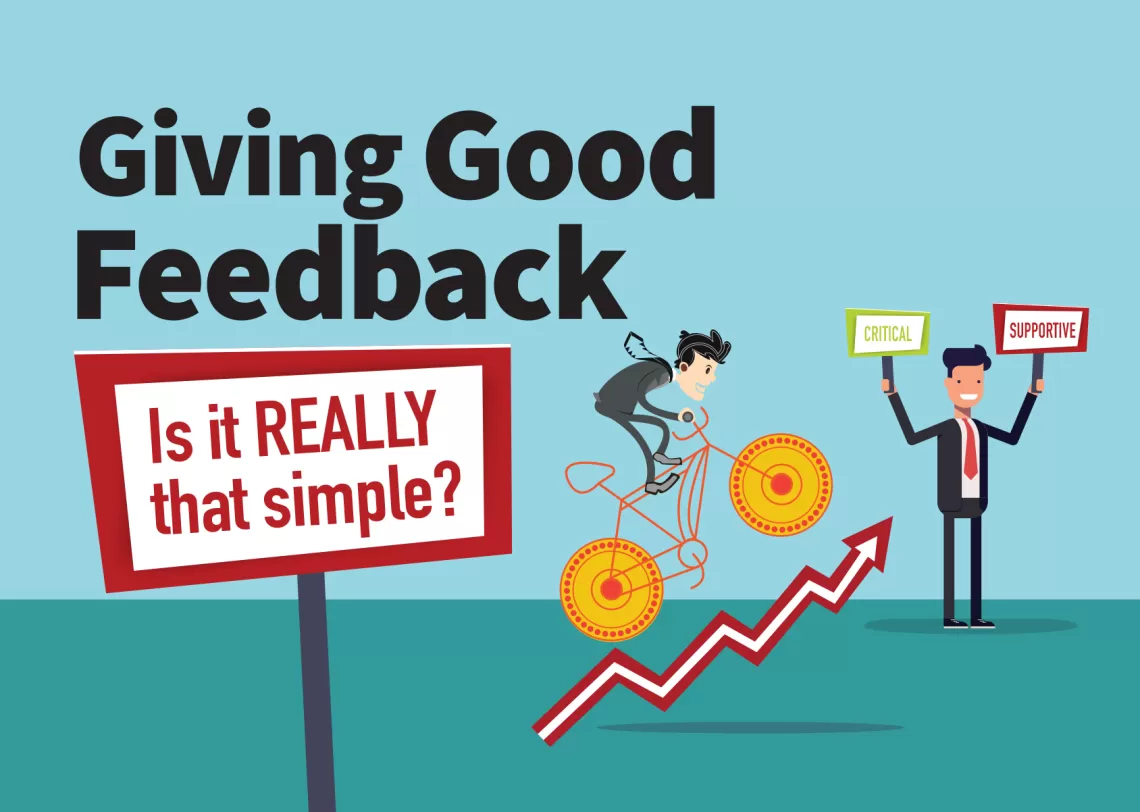
Giving Good Feedback: Is It That Simple?
Employee feedback is critical for personal and business success. Research on feedback shows that intentional and consistent feedback greatly improves staff expertise, productivity, and outcomes. But, knowing that feedback is important and delivering it effectively are two different things.
How Should Feedback Look?
And more importantly, what should it do? Managers often select tactics that have worked for them in the past (using similar feedback they’ve received or given to others). They may look to flashy infographics or business websites to find other strategies. However, the one-size-fits-all or it’s always worked before the approach can be insensitive to an employee’s individual context and history. Managers too stuck on feedback form rather than function will find it difficult to affect future performance and drive business results when those tactics fall flat.
Fortunately, Johnson, Rocheleau, and Tilka (2015) have examined the impacts of feedback based on form, function, and timing. Simple, yes, but nuanced and hard to consistently implement.
The Dimensions of Feedback
Researchers looked at two dimensions of feedback: ACCURACY and EVALUATION. Accuracy was defined as feedback provided contingent on or independent of the individual’s performance. Evaluation included whether that feedback was supportive (encouraging) or critical (constructive).
The Conditions of Feedback

The End Result
Contingent feedback made the most difference—an average 21% increase in performance. Interestingly, whether the feedback was supportive or critical had little effect (less than a tenth of a percent). So, does this mean managers can consistently use contingent, critical feedback without it backfiring?
Maybe, but not so fast. There was little to no change in work performance, but researchers noted,“...contingent (or noncontingent) critical feedback may contribute to a work environment that is more aversive overall, which may decrease job satisfaction as well as increase sabotage, theft, turnover, or other undesirable organizational outcomes.” In other words, be contingent and careful. Notice the effect of your feedback across multiple levels of the organization. To learn more, read the study’s Discussion section.
Take Action
Type of feedback is an important ingredient in managing the performance of others, but it’s only one aspect. If you’re new to OBM, consider taking a CE course on the multi-faceted world of managing workplace behavior. Start here:



